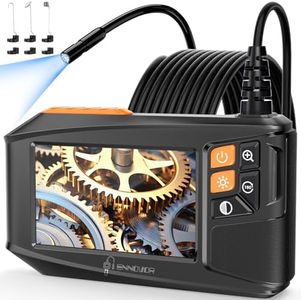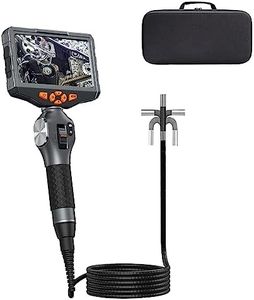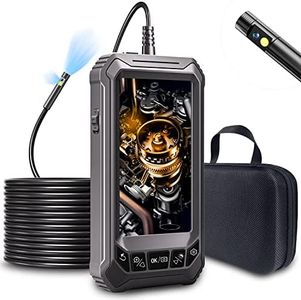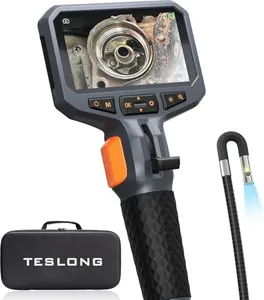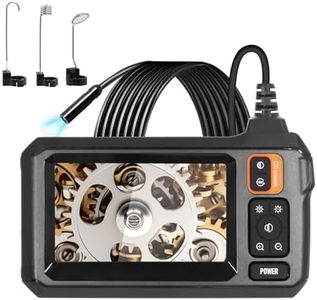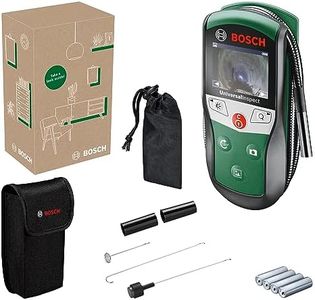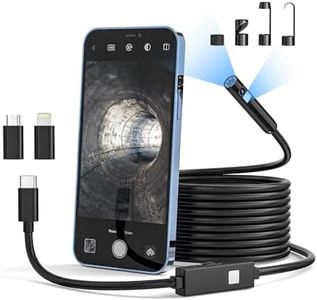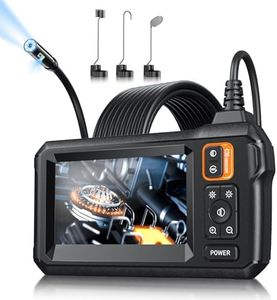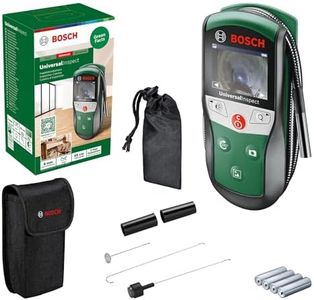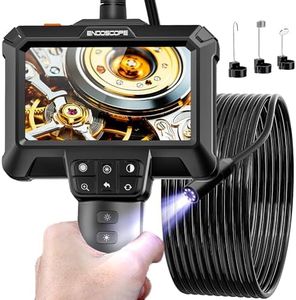We Use CookiesWe use cookies to enhance the security, performance,
functionality and for analytical and promotional activities. By continuing to browse this site you
are agreeing to our privacy policy
10 Best Inspection Cameras
From leading brands and best sellers available on the web.Buying Guide for the Best Inspection Cameras
Inspection cameras, also known as borescopes or endoscopes, are useful tools for peering into places that are hard to reach, like inside walls, engine compartments, or plumbing pipes. When choosing one, you want a model that fits your environment, offers the clarity you need, and is comfortable to use. Think carefully about what types of spaces you’ll be inspecting and the kinds of details you need to see. This will guide you to the options that will suit you best.Camera ResolutionCamera resolution describes how detailed and clear the images and videos from the inspection camera will be. Higher resolution means a clearer and more detailed view, which can be important if you need to see fine cracks, corrosion, or small parts. Entry-level cameras often start at lower resolutions, which may be sufficient for basic tasks like checking for obstructions. If your work requires accurate problem identification or documentation, you may want a mid-range or high-resolution camera. If you know you'll be looking for small defects or need to share images with others, go for higher resolution. For quick inspections or finding larger issues, lower resolution may be enough.
Probe Length and FlexibilityThe probe is the long, snake-like part of the camera that actually gets into tight spots. How long and flexible this probe is determines what environments you can inspect. Shorter, stiffer probes are easier to control but won't reach deep areas; longer, more flexible probes can go further but might be harder to manage in tight curves. If you're mostly checking shallow areas or have a straight path, a shorter and stiffer probe may be best. For plumbing, vent ducts, or other jobs that require reaching deep into bends, choose a longer, highly flexible probe.
Probe DiameterProbe diameter tells you the thickness of the camera probe. This is crucial if you need to get the camera through small openings or narrow pipes. Probes come in various thicknesses—thin probes fit in tighter spaces but might have slightly lower image quality, while thicker probes may carry better cameras but won't fit everywhere. Measure the tightest spots you expect to investigate, and choose a probe diameter that will fit through with ease. For general use, pick a standard size; for specialty tasks like inspecting fuel injectors or small conduit, you'll need an ultra-thin model.
Lighting (LEDs)Since inspections usually happen in dark or enclosed spaces, most cameras have built-in LED lights around the lens. The number and brightness of these LEDs affect how well you can see in shadowed or deep spots. Some models allow you to adjust brightness, which helps avoid glare in close quarters. If you're working in very dark or non-reflective environments, choose a model with brighter or more adjustable LEDs. For outdoor or well-lit spaces, basic lighting options should suffice.
Display TypeSome inspection cameras come with their own built-in screens, while others connect to your smartphone or computer. Built-in screens are convenient and fast, letting you see what’s happening right away, but the screen sizes tend to be small. Smartphone-compatible models usually offer bigger, clearer displays but require extra setup and compatible devices. If you need portability and quick on-site checks, choose a built-in display. If you already rely on a mobile device and want a larger view, consider a camera that connects to your phone or tablet.
Water and Dust ResistanceInspection cameras often need to work in dirty, wet, or dusty environments, so their ability to resist water and debris is important. This is usually described by an IP (Ingress Protection) rating. Higher ratings mean better resistance to water and dust. If you intend to use the camera in plumbing, outdoors, or any wet situations, make sure it has a high water resistance rating. For dry and clean areas, this is less critical, but still helpful for durability.
ArticulationArticulation refers to the probe’s ability to bend or move the camera head to look around corners. Some probes are fixed and only see straight ahead, while others can be controlled remotely to see sideways, up, or down. Articulating probes let you inspect more thoroughly inside complex spaces. If your inspections need views around bends—like inside engines or wall cavities—look for an articulating probe. If you only require straight views, a fixed head may be sufficient and easier to control.
